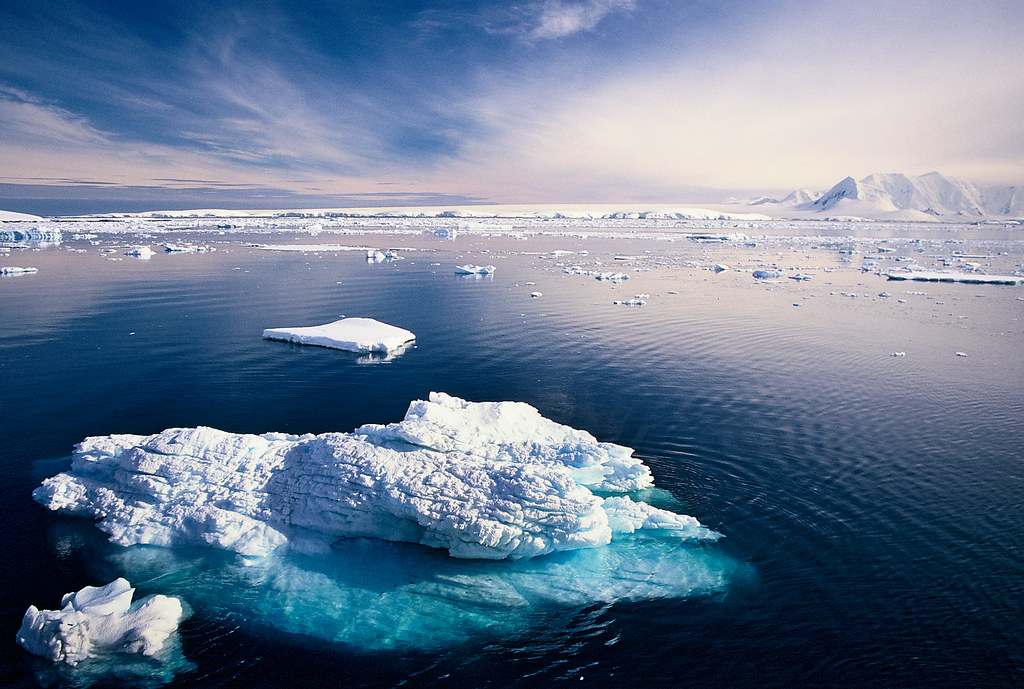“If the world warms up at the current rate we will see the Antarctic system start to get away from us around 2060.”
The vast ice sheets in Antarctica are set to undergo “rapid and unstoppable” melting in coming decades as a result of climate change. Worse: come 2060 a sudden jump in ice melt will raise sea levels precipitously worldwide, inundating low-lying coastal areas.
This is according to the authors of a new study who warn that unless we stop pumping greenhouse gasses into the atmosphere as if there was no tomorrow, the Antarctic is doomed and with it much of the planet too.
“If the world warms up at a rate dictated by current policies we will see the Antarctic system start to get away from us around 2060,” Robert DeConto, an expert in polar climate change at the University of Massachusetts who was the study’s lead author, told The Guardian.
“Once you put enough heat into the climate system, you are going to lose those ice shelves, and once that is set in motion you can’t reverse it.” DeConto explained.
“The oceans would have to cool back down before the ice sheet could heal, which would take a very long time,” the scientist added. “On a societal timescale it would essentially be a permanent change.”
As if that wasn’t scary enough, the authors of another new study predict that as a result of the collapse of the West Antarctic Ice Sheet sea levels will rise not by 3.2 meters over the next millennium (a fleeting moment on the geological timescale) but by more than 4 meters, or 30% more than most current estimates have it.
The reason for the increase in sea level rise is that the ice sheet’s bedrock lies below sea level so when it rises it will push water from the surrounding area into the ocean, raising sea levels, the scientists explain.
“If the West Antarctic Ice Sheet collapsed, the most widely cited estimate of the resulting global mean sea-level rise that would result is 3.2 meters,” said Evelyn Powell, a graduate student at Harvard University who was an author of the paper. “What we’ve shown is that the water-expulsion mechanism will add an additional meter, or 30 percent, to the total,” Powell explained.
“The magnitude of the effect shocked us,” said Linda Pan, a PhD student in Earth and planetary science at Harvard who was a coauthor. “Previous studies that had considered the mechanism dismissed it as inconsequential,” she added. “No matter what scenario we used for the collapse of the West Antarctic Ice Sheet, we always found that this extra one meter of global sea-level rise took place.”
Not only that, but sea levels will continue to rise even after the ice has stopped melting. “The damage we are doing to our coastlines will continue for centuries,” Pan said.
All is lost then? Not necessarily.
If we can meet commitments set forth in the Paris Agreement to limit planetary warming to relatively moderate levels, Antarctica can still largely be saved.
If we manage to lower our emissions, ice loss from the region’s vast sheet would contribute only somewhere between 6 centimeters and 11 centimeters of sea level rise global by the end of the century as per the current rate, according to DeConto and his team.
“It’s really the next few decades that will determine the sea level rise from Antarctica,” De Conto said. “These ice shelves won’t be able to just grow back.”
This story first appeared on Sustainability Times
South Africa Today
© 2021 Sustainability Times.
This article is licensed under a Creative Commons Attribution-ShareAlike 4.0 SA International License.












